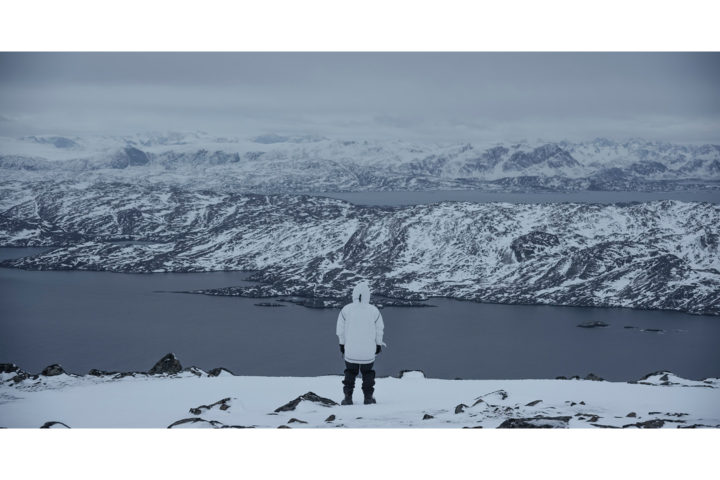
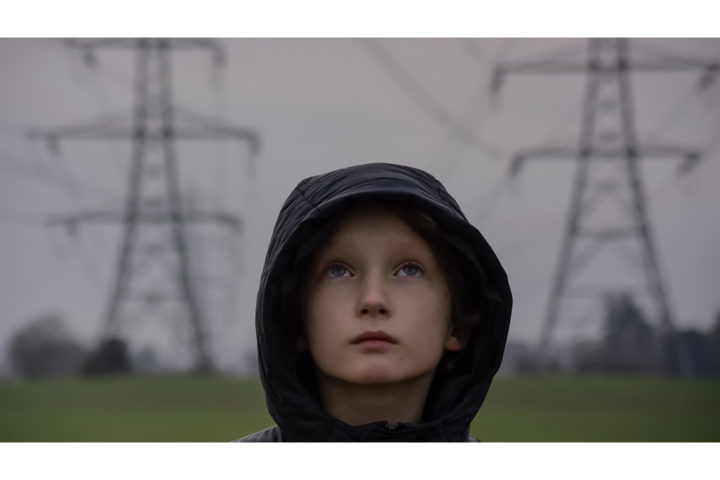
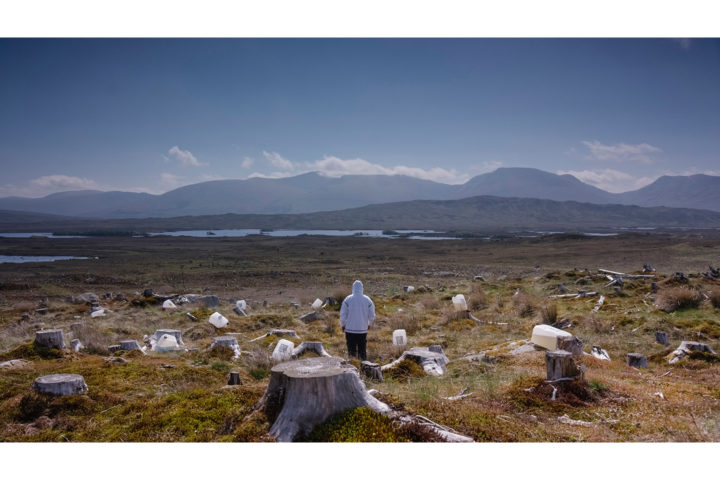
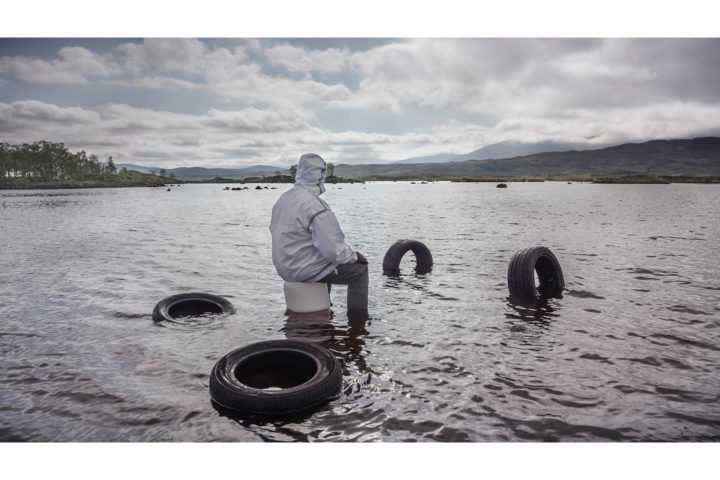

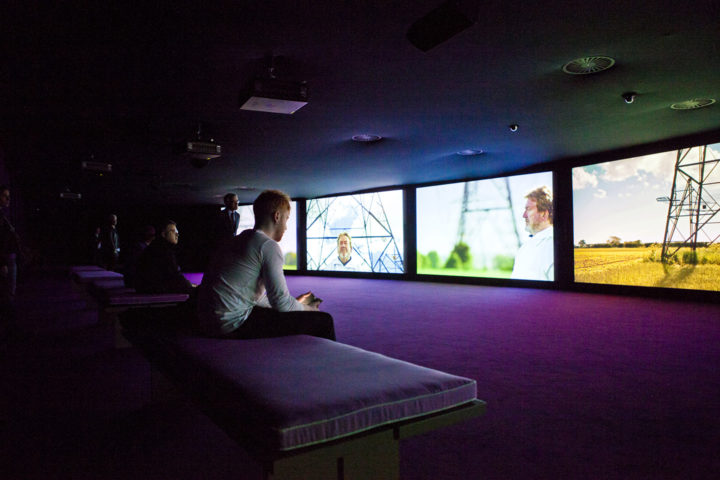
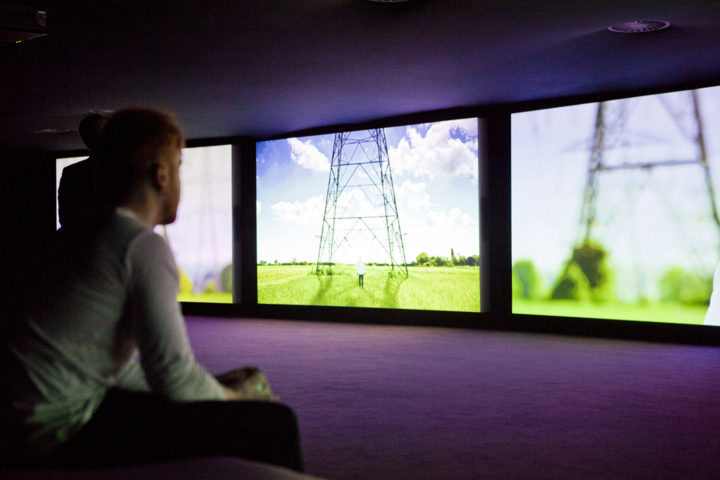
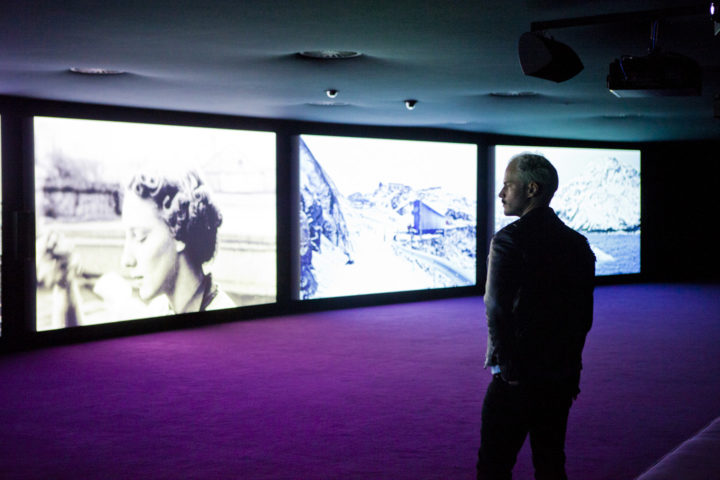
Arthub Favorite: Week 90
CONVERSATIONS
Recently, British visual artist John Akomfrah finished his new show in Barbican London, with a follow up itinerancy in Madrid, which will last until March 25, 2018. Writer Juan Canela interviewed the artist dressing on the topics of his new work, landscape, and anthropocene.
text/Juan Canela
John Akomfrah (1957) is a respected artist, filmmaker, and one of the co-founding members of the influential Black Audio Film Collective, which started in London in 1982. His work points at very urgent matters in the world—the refugee crisis or the global warming—articulating non-linear narratives from philosophical and historical perspectives. My phone call interrupted his workday at his studio in London, where he was revisiting the sound on his latest film, Purple, presented last year at Barbican London and now on view from February 20 at Thyssen-Bornemisza Museum in Madrid.
Juan Canela (JC): Purple is an immersive, six-channel video installation addressing climate change and its effects on human communities, biodiversity, and the wilderness, which we can understand as your response to the Anthropocene. It is very exciting to discover how you deal with this geological period—many times described as a European issue—from a postcolonial perspective. How do you understand the Anthropocene, and how does Purple deal with it?
John Akomfrah (JA): Maybe the first problem is the word itself. I am not interested in it by itself, but in the work of a number of thinkers who are expanding the kind of work I am doing into profound new forms. People that are beginning to think and theorize the question of the finitude and notions related with the end. But, of course, you don’t have to dive into the entire package of the Anthropocene thesis to be aware that these thoughts are buried in the way we are. To be a metropolitan subject growing up in post-war Europe—especially in this corner of Europe—means living in the routine of being exposed to carbon monoxide everyday, to have all manner of metals in the water you drank, and to eat fruit full of indescribable things. This was my childhood in England, and I want to make sense of that again to myself because that is the way to start understanding the global civilization we have. Living in Europe was a privilege, and living elsewhere was not. I’m trying to understand how one could come to another definition between center and periphery, between the industrial and the underdevelopment by another language, another narrative that is not economic. Of course, all of this has in the background what one could call the Anthropocene; the question is what is the implication of the overlap? What does it allow us to relocate in both worlds? That’s what I’m trying to approach with Purple. It will be also fascinating for you to see it because it’s large-scale, with six screens. It’s very difficult to say, “It’s about this, but it’s also not about this, or not only about this.”
JC: I guess that the decision to work with six channels is related to what you’re saying: the need to challenge the linear narrative by creating an overwhelming cascade of image and sound, which seems consequential to the idea of the global interconnection of local issues, how everything overlaps at some level, and how progress made possible by technologies can be related with destruction and suffering.
JA: Indeed. To begin to force many ways of being and living, I must work with the premises of the cinematic. Nothing will happen that will change that, but I’m not necessarily interested anymore in the arrogance of its spectacularity, but in the unique attributes of the screen, which is that it’s singular and allows you to develop a narrative that has a certain inheritance of journey: a beginning, middle, and end. In terms of form, I’ve been developing an interest in cinematic film—not a passing thing but a religious, devotional interest. I don’t buy into totalitarian assertions anymore; I believe there are other ways in which we could pursue this practice without talking to old clichés. Organizing new spectacularity, new configurations, or what constitutes moving images—multiplicity, overlap, affective proximity, and subjectivity are very important.
JC: You have filmed different landscapes from different countries; for example, during your travels on TBA21–Academy’s expeditions in French Polynesia in December 2016. How do you engage with landscape and nature while filming?
JA: Part of the transformation we are speaking about—the migrations of interests in the cinematic—is taking place in what we can call landscape. Twenty years ago, I approached this notion as the “elsewhere,” the face on which the protocol was supposed to happen. I have an idea, and then I go to a place to realize that idea. Either you have a script or a vision, and you go to certain landscape to confirm a thesis in one way or another. But the premise in this case is totally reverse. The overall project of TBA21-Academy The Current is about climate change, but we go all together in the boat—people from different fields of knowledge—to look, to see, to experience, to live, and only then to think what we can do together. That’s very important because there is always this sense in conventional cinema that the landscape is the space of the planet, the place where one goes to execute something in a very colonial, supremacist way. And, of course, I try to reverse that logic a little bit. So then someone asks you: Do you want to come to work on a boat in Tahiti? I am obviously working in spaces at the opposite extreme of our planet, places where climate change is making a differential impact, and we try to orchestrate a dialogue with it when we are there. Far from the colonial idea of the landscape—something that is out there waiting for us—I leave the question open as long as possible, and the relation between the landscape and me is created in a genuine in-between-us conversation in which we have to figure out what we can offer to each other.
JC: Purple has been produced for Barbican´s Curve gallery in London, a very particular space that has defined the final form of the installation. Now that the work will travel to different locations, how do you work with its itinerancy?
JA: The curve is a very particular space, so the way these images work and how the sound is orchestrated there (and soon in Madrid) is very different. One of the things I am very keen to do is to take the uniqueness specified in any space onboard. I think with moving image shows, you should work with location in a way, you should work with the space, because you will never see Purple in the same way you saw it in the Barbican. Because it is all about experience. So I want to work in each iteration making different changes in the sound, some tones in the pictures, or aspects in the work that enter into a dialogue with each space, because the experience of moving image work is absolutely contingent to the space. It should be really site-specific and change on each occasion, and I am right now in the process of doing it for the show in Madrid. Then working with people like Chus Martínez obviously clarifies some aspects, and in the process of the conversation, some new perspectives appear that you hadn’t thought about before.
Click here to check the original article published on MOUSSE.
To find more information about the show in Barbican London, please click here.